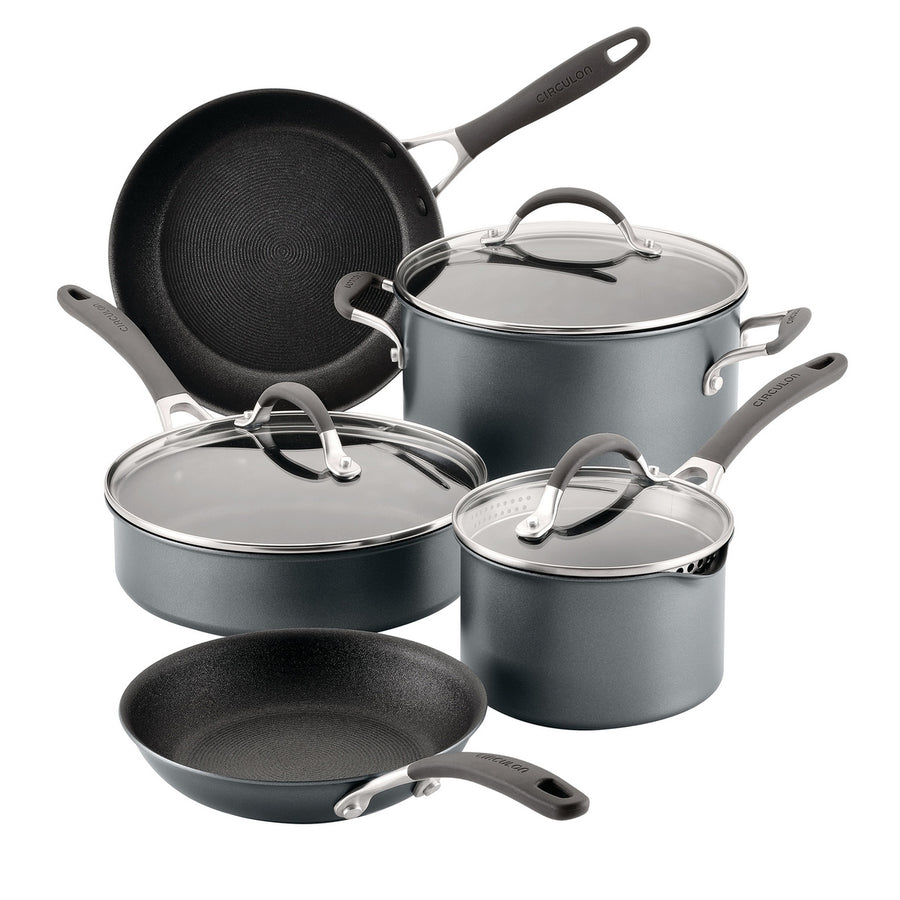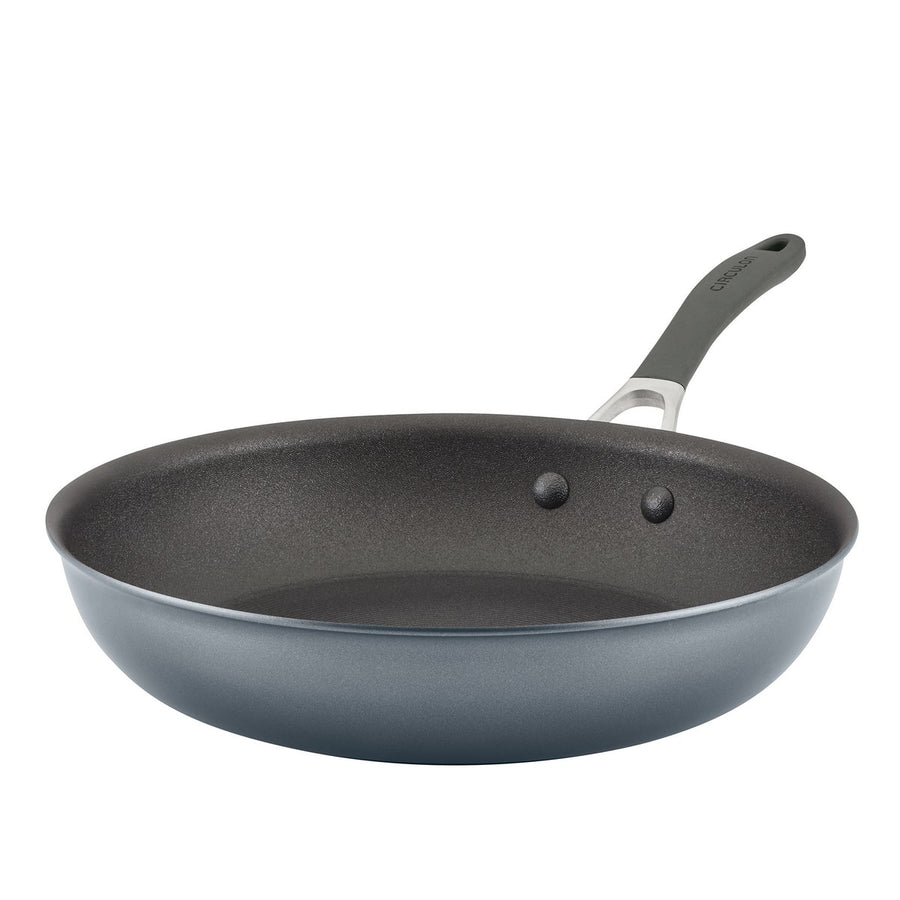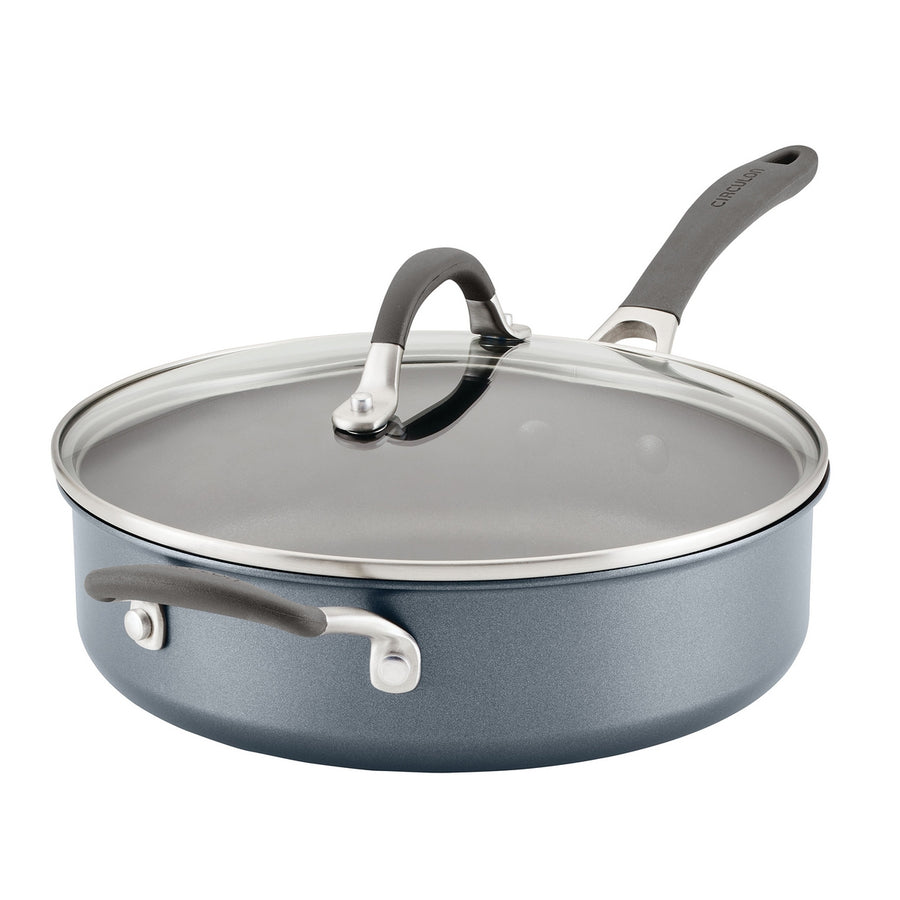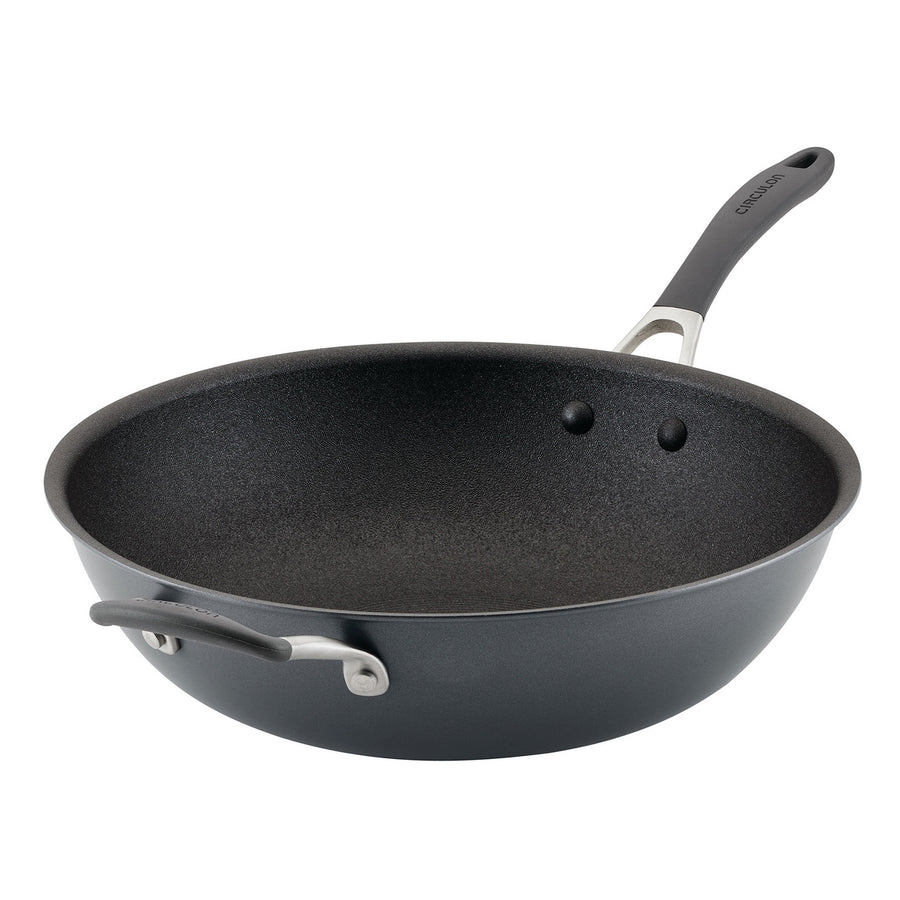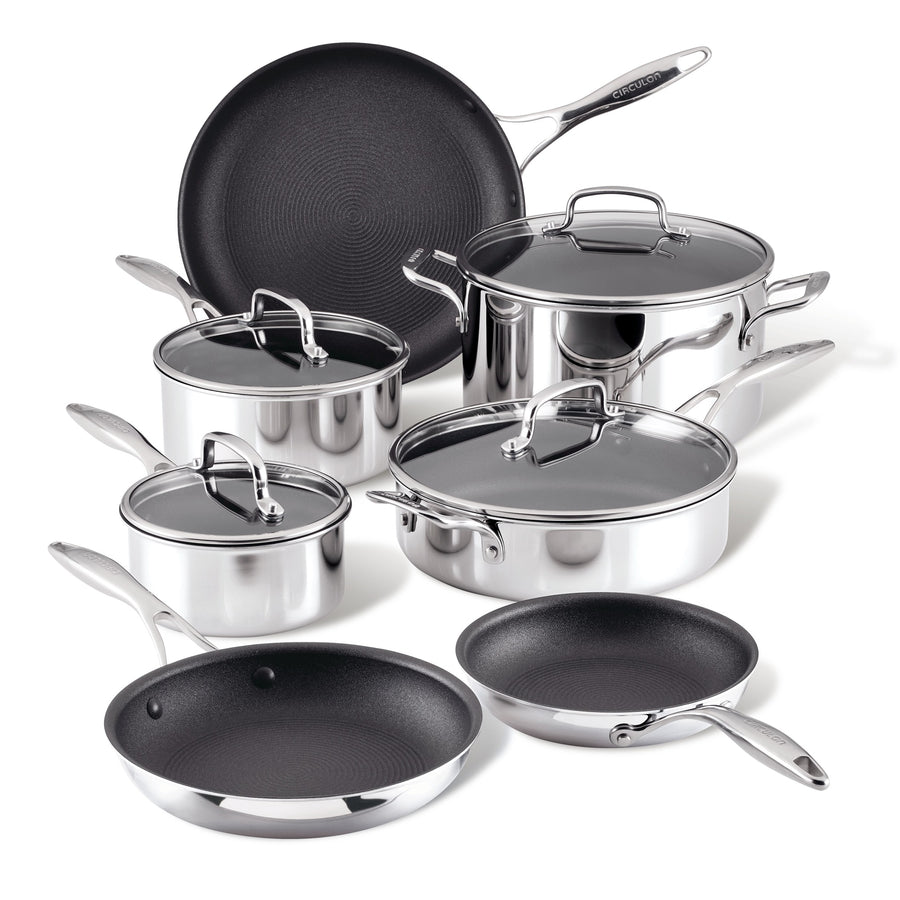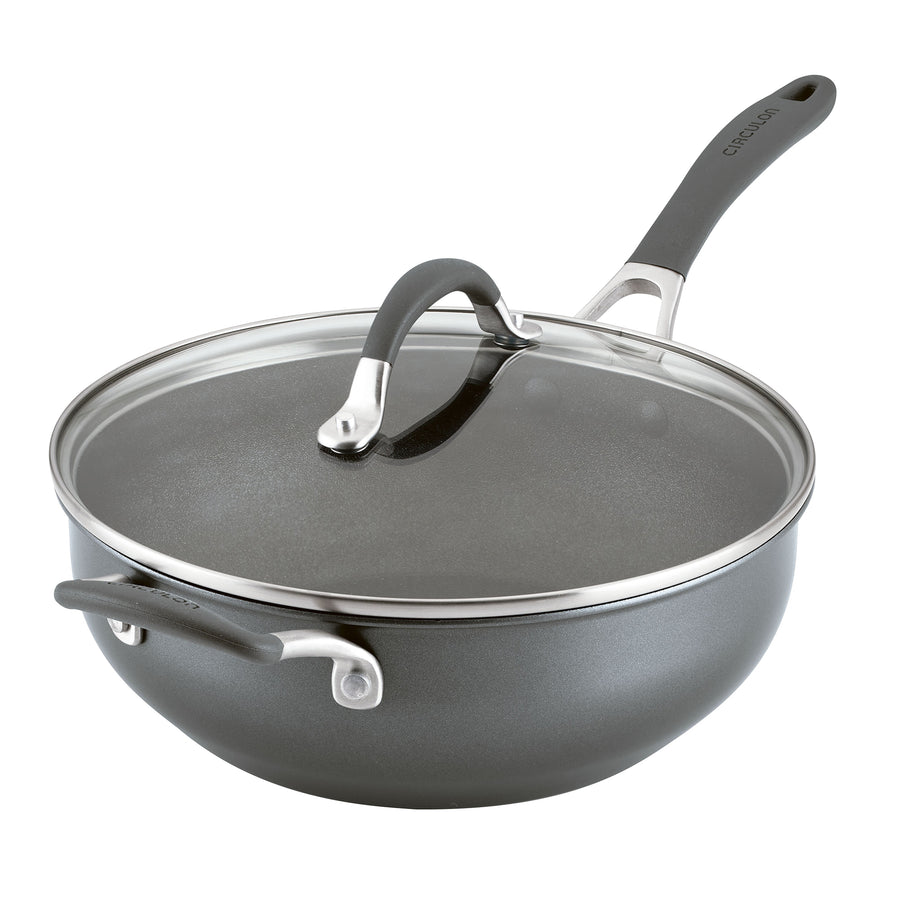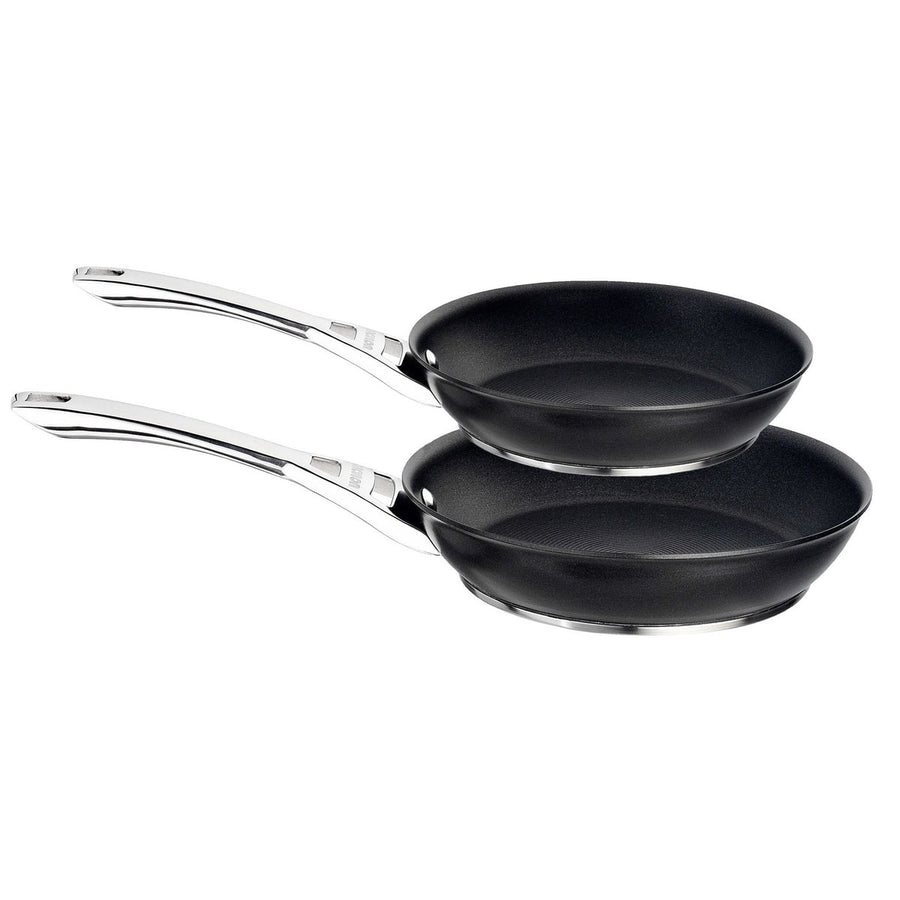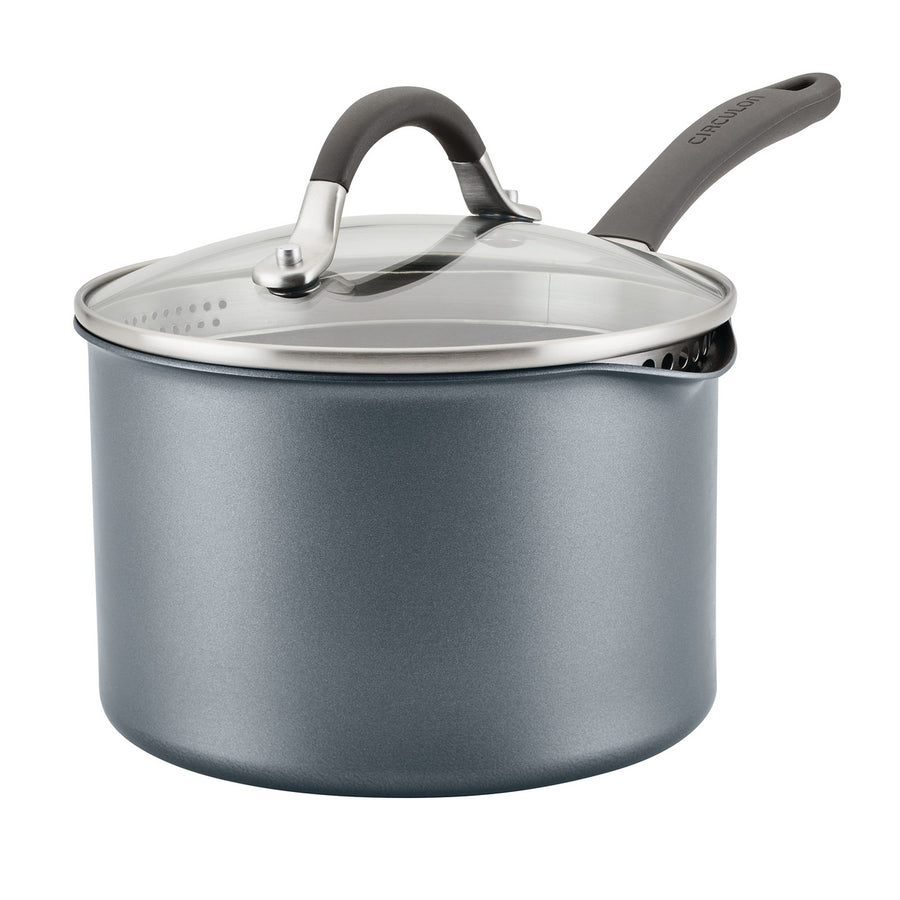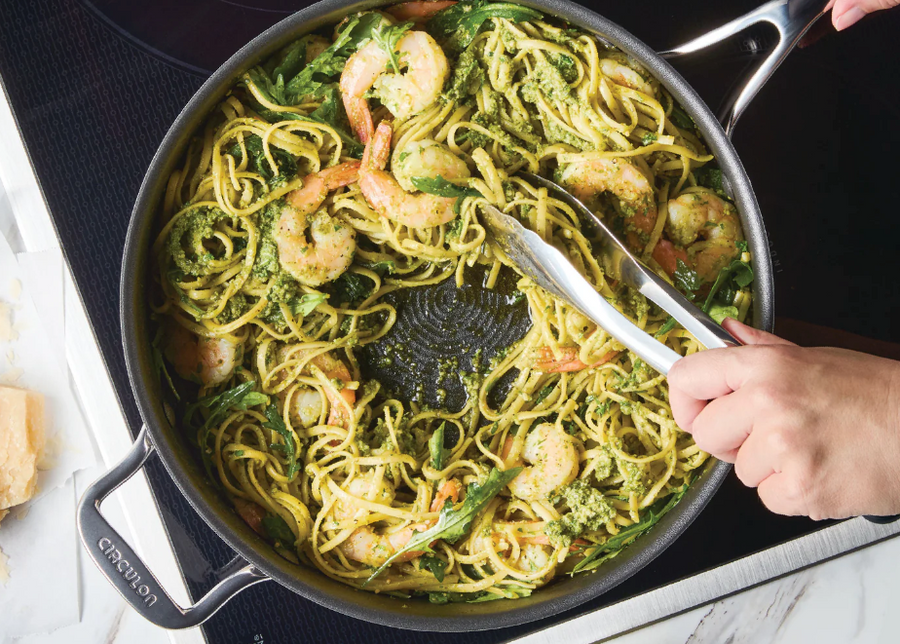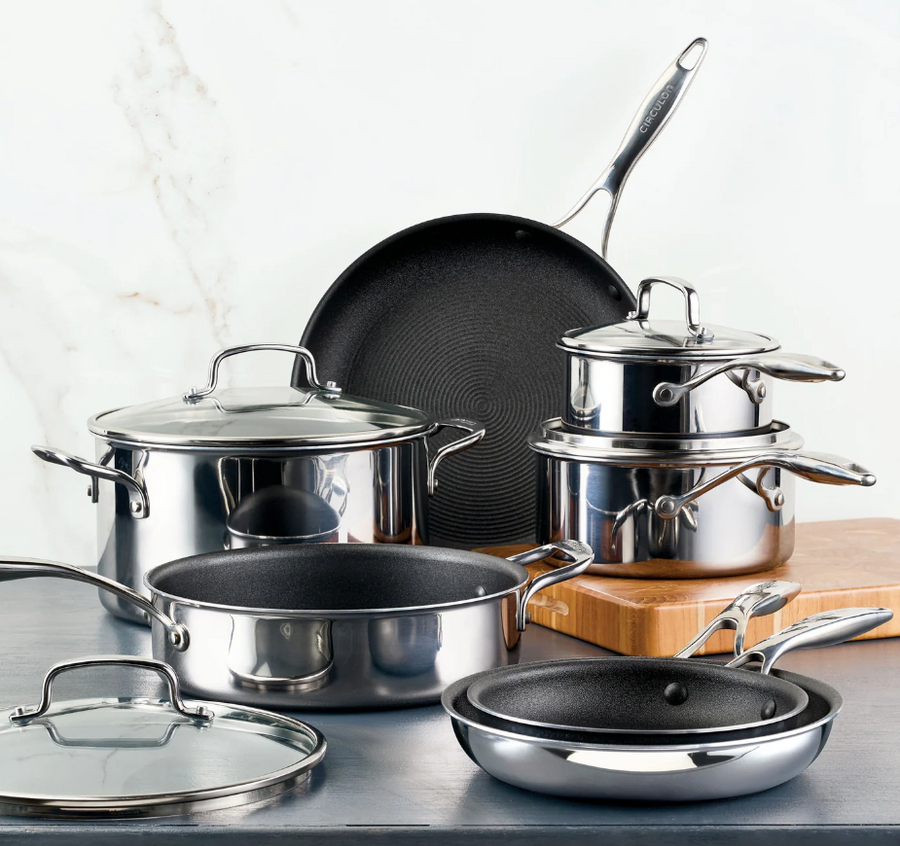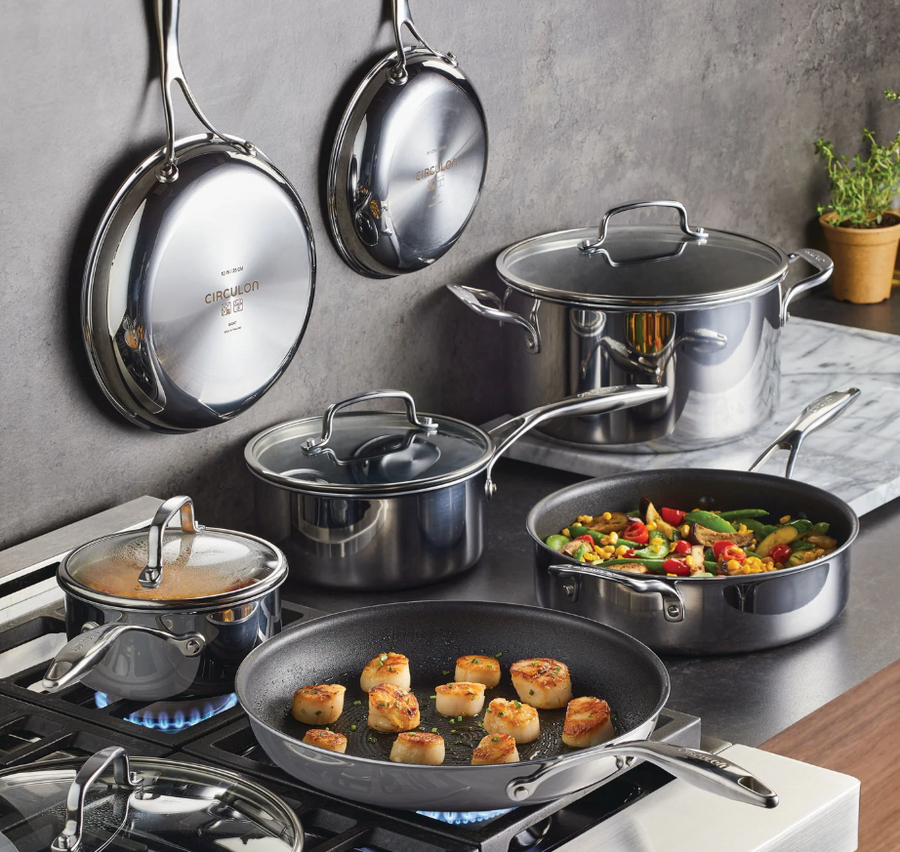The TL;DR
What’s the difference between a sauté pan and a frying pan? Here are the key points you need to know:
-
The key difference: sauté pans have straight sides, ideal for liquids and braising, while frying pans (skillets) have sloped sides, better for cooking and flipping.
-
Sauté pan use: sauté pans are best for recipes involving liquids like sauces, braises, and stews. The straight sides prevent splattering and allow for steaming with a lid.
-
Frying pan use: frying pans are excellent for quick cooking methods requiring frequent flipping, such as frying eggs, or searing meats. The sloped sides provide easy access to the food.
-
Historical context: sauté pans are linked to French culinary traditions, while frying pans have a much older history, evolving from simple, flat pans used for frying.
-
Which to choose?: owning both a sauté pan and a frying pan offers versatility in the kitchen, allowing you to tackle a wider range of cooking styles and recipes effectively.
If the kitchen is a workshop, then your cookware is the tool of the trade. Among the most indispensable pieces in any cook’s arsenal are the sauté pan and the frying pan (or skillet).
At a glance, their differences might seem trivial. After all, they share similar diameters and both rest comfortably on your stove top. But these two pans have unique features that cater to entirely different styles of cooking.
In this article, we’ll shatter the misconception that sauté pans and frying pans are interchangeable, and leave you with a clear appreciation for why owning both can transform your culinary endeavours. Keep reading to learn more…
Sauté pans and frying pans: at a glance
Let’s start with a deep dive into the two pan families. Believe it or not, the differences between sauté pans and frying pans are in fact rooted in centuries of culinary evolution. Let’s begin with the sauté pan:
Sauté pan
Historically, the sauté pan's design owes much to the French culinary tradition. The term “sauté” originates from the French word sauter, meaning “to jump,” a nod to the motion of food as it’s stirred or flipped in a pan.
French chefs needed cookware that could handle delicate tasks like sautéing vegetables while also excelling at hearty preparations like braises. For this reason, the sauté pan became an essential tool in French cuisine, its design synonymous with European culinary excellence.
But what is this design? The sauté pan is recognised by its straight, vertical sides, which set it apart immediately from the sloped edges of its counterpart.
These straight edges are not merely an aesthetic choice but a functional one. They create a generous cooking volume, which makes the sauté pan particularly useful for recipes that involve liquids, such as braises, reductions, or sauces. The straight sides also minimise splashing, a thoughtful feature that reduces mess when stirring sauces or handling dishes with a higher liquid content.
Meanwhile, the wide, flat base provides an excellent searing surface, achieving an even browning of meats, vegetables, and other ingredients.
In most cases, sauté pans come with a tightly fitted lid, further improving their efficacy by allowing for steaming, braising, and slow cooking. Larger sauté pans often come with a helper handle opposite the main handle, offering stability and ease when moving a heavy, full pan from stove top to oven or table.
Frying pan
On the flip side, the frying pan – or skillet -- tells a story of simplicity and agility that dates back much further than you’d think.
The history of the humble frying pan dates back thousands of years, making it one of the oldest cooking tools known to humankind. Archaeological evidence shows that ancient Mesopotamians and Egyptians used flat, shallow metal pans for frying and browning food over open flames. These early frying pans were often made of bronze or copper and were prized for their ability to conduct heat evenly.
Over time, the design evolved to include the signature sloped edges, reflecting the growing sophistication of cooking techniques and the diverse needs of chefs.
By the 19th century, the term “skillet” became common, particularly in America. The skillet often referred to cast-iron pans, which had become a household favourite thanks to their durability and superior heat retention.
Today, the frying pan’s design has expanded to include materials like stainless steel, aluminium, and non-stick coatings, but its essential form remains unchanged.
Its defining feature is its sloped, angled sides, which make it easy to access the food within. This design is particularly advantageous for tasks that require frequent flipping, turning, or stirring, such as frying eggs, flipping pancakes, or quick-frying vegetables.
The slightly lower walls also allow steam to escape more easily, reducing the chances of food becoming soggy and promoting crisp, golden exteriors on fried items.
Unlike sauté pans, frying pans rarely include a lid, as they are more commonly used for dry-heat cooking methods that don’t require moisture retention.

The key differences between sauté pans and frying pans
While the sauté pan and frying pan might appear similar at a glance, their design differences create distinct impacts on how food is prepared and cooked. Let’s break this down into the most critical aspects which influence the culinary applications and outcomes for these two versatile kitchen tools…
Shape and depth
The shape of a pan isn’t just about aesthetics, it directly affects cooking performance.
-
Sauté pan: the straight, vertical sides of a sauté pan are designed to contain ingredients and liquids with ease. This makes it ideal for tasks that involve simmering sauces, braising meat, or shallow frying, where the priority is keeping everything in the pan without splashing. The high sides also allow for easier stirring and mixing, particularly when working with larger quantities.
-
Frying pan: in contrast, the sloped and angled sides of a frying pan facilitate greater access to the contents. This is perfect for dishes that require frequent turning, flipping, or stirring, like eggs, pancakes, or stir-fried vegetables. The open design allows for better visibility of what’s cooking and is particularly suited to fast, dry-heat methods.
Surface area
Surface area might seem like a trivial detail, but it has a significant impact on cooking efficiency and results.
-
Sauté pan: owing to its straight sides, the sauté pan offers a larger cooking surface for the same diameter compared to a frying pan. For instance, a 12-inch sauté pan provides considerably more flat cooking space than a 12-inch frying pan measured at the rim. This difference allows you to sear more food at once without overcrowding, an essential consideration when cooking larger portions or batch cooking.
-
Frying pan: the smaller surface area, while still ample for many tasks, is tailored more for quick cooking and smaller portions, where food movement and redistribution take precedence.
Volume
Volume is another consideration to make when differentiating between the sauté pan and the frying pan.
-
Sauté pan: the straight, high walls of a sauté pan create a greater capacity for holding liquids. This makes it excellent for tasks like shallow frying, where a significant amount of oil is used, or simmering stews and sauces that require more depth to avoid spills.
-
Frying pan: on the other hand, frying pans are not designed to hold large amounts of liquid, though they can handle smaller amounts for recipes like pan sauces or reductions.
Weight
The weight of a pan affects how it’s handled during cooking.
-
Sauté pan: these are generally heavier than a frying pan of the same size, largely due to its wider base and high walls; the added heft contributes to excellent heat retention and stability on the stove top. However, this also means the pan can be less manoeuvrable. To counteract this, many sauté pans include a helper handle to assist with lifting and transferring.
-
Frying pan: being lighter, the frying pan offers superior agility, especially for techniques like tossing or flipping food. Its lightweight design makes it the go-to choice for cooks who prioritise speed and ease of handling.
Tossing ability
Part of the joy of cooking is in the flair, and for those who enjoy the joy of a good “chef’s toss,” there is a clear winner.
-
Sauté pan: with their straight sides and heavier build, sauté pans require stirring with a utensil rather than tossing. While this might be less dramatic, it means more control over delicate ingredients.
-
Frying pan: the sloped sides and lighter weight of a frying pan make it easy to toss and redistribute food evenly without the need for utensils. This is particularly useful for stir-frying, scrambling, or flipping, where constant movement is key to even cooking.
Evaporation
The differences in side design of these two pans can also affect evaporation rates, affecting the end result of your food.
-
Sauté pan: with their higher, straight sides, sauté pans retain more steam and moisture, making them ideal for braising, poaching, or simmering recipes. However, this can be a disadvantage for tasks like searing, where excessive steam might hinder the formation of a crispy crust.
-
Frying pan: with their open, sloped sides, frying pans encourage faster evaporation of moisture. This is particularly beneficial when searing meat, as rapid evaporation leads to better browning and caramelisation. The open design also allows for quicker reduction of liquids when making pan sauces.
The differences between sauté pans and frying pans extend far beyond their appearance. These features are carefully designed to cater to distinct cooking techniques, so that each pan excels in its respective domain.
Whether you prioritise surface area, volume, or ease of use, understanding these nuances will help you choose the right tool for the job, or better yet, make the case for having both in your kitchen.

Cooking Methods and applications
When it comes to cooking, the sauté pan and frying pan are champions of their respective domains. Their unique designs make them particularly well-suited to certain methods and recipes, ensuring efficient, delicious results when used correctly.
But beyond the techniques of their culinary namesakes, how do they fare with other cooking methods?
Frying
Let’s start with the original. Frying is an area where both pans shine, but their designs make them better suited to different styles.
-
Sauté pan: as we’ve mentioned before, the high sides of a sauté pan make it a fantastic choice for shallow frying. The additional depth allows for a larger volume of oil, which is helpful when frying items like breaded cutlets or doughnuts. For deeper frying tasks, however, a dedicated pot might be more appropriate.
-
Frying pan: the traditional frying pan is perfect for shallow, quick frying tasks like crisping bacon, frying eggs, or making pancakes. The sloped sides mean you can easily access the food with a spatula for flipping.
Sautéing
The irony here is that sautéing – the rapid cooking of small food pieces over high heat while stirring or tossing – is often better suited to a frying pan than its namesake, the sauté pan.
-
Sauté pan: while it can certainly be used for sautéing – it wouldn’t be much good if it couldn’t, after all – the straight sides of a sauté pan mean you’ll need to rely on utensils to keep the food moving rather than tossing it in the air.
-
Frying pan: with its lightweight design and sloped edges, a frying pan is perfect for true sautéing, where tossing food in the pan is key to even cooking. Think of dishes like stir-fried vegetables or garlic prawns – these are easily whipped up in a frying pan.
Searing
With the two big names out the way, let’s dive into the other cooking methods. Both pan types are excellent for high-heat searing, but in their own ways.
-
Sauté pan: thanks to its wide, flat base and larger surface area, a sauté pan is great for searing multiple pieces of meat or fish simultaneously. The depth of the sides also helps to contain splattering when working with hot oil.
-
Frying pan: while the cooking area is smaller, the frying pan excels at achieving a fast, even sear. Its sloped sides allow moisture to evaporate quickly, enabling that golden-brown crust on steaks, chicken breasts, or pork chops.
Braising
When it comes to braising – searing food and then cooking it slowly in liquid – one pan clearly stands out.
-
Sauté pan: the depth and fitted lid of the sauté pan make it the ideal choice for braising. Whether you’re preparing coq au vin, beef stroganoff, or braised vegetables, a sauté pan offers the best results.
-
Frying pan: while not specifically designed for braising, a frying pan can handle smaller-scale braising tasks, especially when paired with a makeshift lid. However, its shallower sides may result in some liquid loss during cooking.
Simmering and sauce making
For simmering and sauce-making, each pan offers its own unique advantages.
-
Sauté pan: with its straight sides and the option of a fitted lid, a sauté pan is perfect for reducing sauces, stews, or soups while minimising splatter. The depth of the pan also allows for greater liquid capacity, making it a great choice for a plethora of options.
-
Frying pan: while it can be used for sauces or reductions in a pinch, the frying pan’s shallower design is less suited for large quantities of liquid. Its sloped sides do, however, facilitate rapid evaporation when a quick reduction is desired. This is useful when you need to reduce a sauce to a thick, sticky glaze for example.
Stir-frying
While neither pan holds a candle to the traditional wok, both can be used for stir-frying, with one being slightly more favourable:
-
Sauté pan: the larger surface area of the sauté pan makes it possible to stir-fry a substantial volume of ingredients. However, its straight sides hinder the tossing motion essential to a classic stir-fry.
-
Frying pan: thanks to its sloped sides, the frying pan mimics the design of a wok quite admirably, enabling quick and even cooking. Ingredients can be tossed and moved with ease, making it a strong alternative for stir-frying.
Other applications
Beyond these specific techniques, both pans have some unconventional uses that make them shine in different areas:
-
Sauté pan: ideal for boiling pasta, simmering soups, or braising greens, a sauté pan can act as a stand-in for a small stockpot. You can also use it for recipes that require tossing pasta in sauce directly in the pan.
-
Frying pan: smaller frying pans are great for delicate tasks like making crêpes, cooking eggs, or even baking cookies.
Which pan should you choose?
Well, isn’t that the million-dollar question?
When deciding between a frying pan and a sauté pan, understanding the merits of each can help you select the right tool for your cooking style.
Ultimately, the thing you need to keep in mind is quality, and in this area, Circulon excels. We offer exceptional options for both categories, each designed to cater to different culinary needs. Let’s look at them:
The ultimate frying pan

If agility and precision are high on your list of cooking priorities, the Circulon ScratchDefense Extreme Nonstick Frying Pan is the choice for you.
Its lightweight design guarantees ease of handling, while the sloped sides provide effortless access for flipping, turning, and stirring. Whether you're frying eggs, crisping bacon, or searing delicate fish fillets, this pan excels at delivering precise results.
The ultra-durable ScratchDefense non-stick surface also resists wear and tear even with regular use, meaning your new pan will keep performing long after sub-quality pans will have to be replaced.
The best sauté pan

For those who value versatility, the Circulon Infinite Induction Sauté Frying Pan & Lid with Non-Stick is a no-brainer.
Its straight, high sides and larger cooking surface make it perfect for tasks that require containment, such as braising, shallow frying, or simmering sauces. The fitted lid allows for moisture retention, enabling slow cooking and stewing with ease.
This pan’s capacity and thoughtful design make it a fantastic all-rounder for dishes that demand a combination of wet and dry cooking techniques.
Make the right choice for your kitchen with Circulon
The sauté pan and frying pan are both essential tools with their own unique strengths. Whichever pan you choose, you’ll set yourself up for some incredible meals cooked to perfection.
Still can’t decide between a frying pan or sauté pan? Why not choose both?! For a fully equipped kitchen, having both means you’ll never have to compromise on your cooking needs.
And, at Circulon, not only do we have the UK’s best range of frying pans and sauté pans – all available at incredible prices – but you can spread the cost of your purchase over three, interest-free payments with Klarna.
Shop frying pans and sauté pans at Circulon now
For more cookware and bakeware buying guides, information and advice, explore the Circulon blog…
Getting the Most From Your Wok | Cookware Buying Guide | How to Measure a Frying Pan




